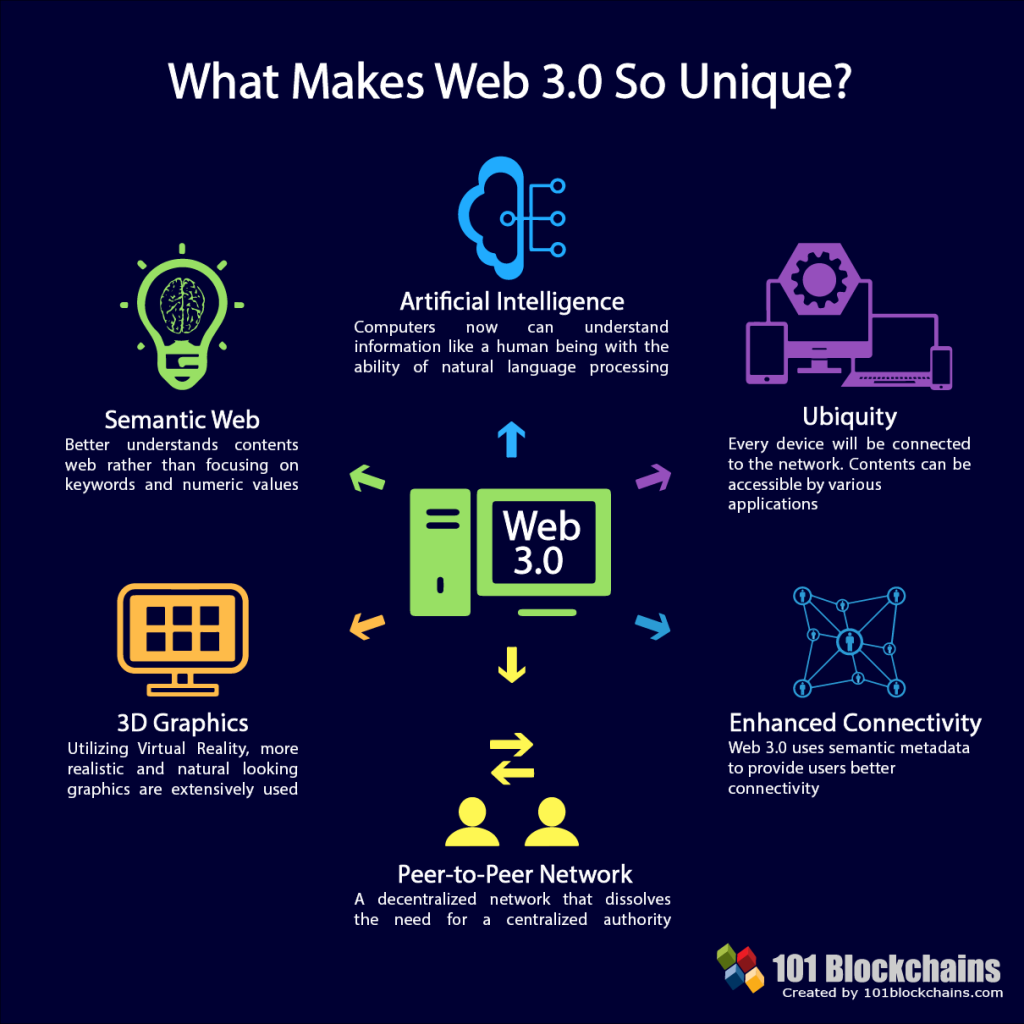Unleashing The Power Of Web 3.0 Development Languages: Transforming The Digital Landscape With Cutting-Edge Technology!
Web 3.0 Development Languages: Revolutionizing the Internet
Introduction
Welcome, Readers! In this article, we will delve into the fascinating world of Web 3.0 development languages and explore how they are transforming the way we interact with the internet. With the rapid advancement of technology, the need for more sophisticated and dynamic web applications has emerged. Web 3.0 development languages have stepped in to meet this demand, allowing developers to create highly interactive and intelligent websites. In this comprehensive guide, we will discuss the key aspects of Web 3.0 development languages, their benefits, and their impact on the future of the internet.
3 Picture Gallery: Unleashing The Power Of Web 3.0 Development Languages: Transforming The Digital Landscape With Cutting-Edge Technology!


![Picture of: Best Programming Languages to Learn in [Updated]](https://meicode.info/wp-content/uploads/2023/09/best-programming-languages-to-learn-in-updated_0.png)
What are Web 3.0 Development Languages?
Web 3.0 development languages are a set of programming languages and frameworks that enable the creation of advanced web applications with enhanced interactivity, intelligence, and user experience. Unlike the static and limited capabilities of Web 1.0 and Web 2.0, Web 3.0 development languages empower developers to build websites that can understand, learn, and adapt to user behavior.
Key Points:
Web 3.0 development languages enable the creation of highly interactive and intelligent websites.
These languages empower websites to understand, learn, and adapt to user behavior.

Image Source: nitrocdn.com
Who Uses Web 3.0 Development Languages?
Web 3.0 development languages are utilized by a wide range of individuals and organizations involved in web development. From freelance developers to large corporations, anyone seeking to create cutting-edge web applications can benefit from harnessing the power of Web 3.0 development languages. Additionally, businesses across various industries, such as e-commerce, healthcare, and finance, can leverage these languages to offer highly personalized and engaging user experiences.
Key Points:
Freelance developers, small businesses, and large corporations can utilize Web 3.0 development languages.
Businesses across various industries can leverage these languages to create personalized user experiences.
When Did Web 3.0 Development Languages Emerge?

Image Source: analyticsvidhya.com
The concept of Web 3.0 development languages began to emerge in the early 2000s. As the limitations of static websites became evident, developers started exploring ways to enhance the interactivity and intelligence of web applications. Over time, with advancements in artificial intelligence, machine learning, and natural language processing, Web 3.0 development languages have evolved to enable the creation of highly sophisticated websites.
Key Points:
The concept of Web 3.0 development languages emerged in the early 2000s.
Advancements in AI, machine learning, and natural language processing have contributed to the evolution of these languages.
Where are Web 3.0 Development Languages Used?
![web 3.0 development languages - Best Programming Languages to Learn in [Updated] web 3.0 development languages - Best Programming Languages to Learn in [Updated]](https://meicode.info/wp-content/uploads/2023/09/best-programming-languages-to-learn-in-updated_0.png)
Image Source: hackr.io
Web 3.0 development languages are used globally by developers and organizations involved in web development projects. From personal websites to large-scale enterprise applications, these languages find application in various domains. Additionally, with the rise of mobile devices and the Internet of Things (IoT), Web 3.0 development languages are being utilized to create intelligent and interconnected systems.
Key Points:
Web 3.0 development languages are used globally in a wide range of web development projects.
These languages find application in personal websites, enterprise applications, and interconnected systems.
Why Should You Consider Web 3.0 Development Languages?
Web 3.0 development languages offer numerous advantages over their predecessors. By leveraging these languages, developers can create websites that are highly interactive, intelligent, and personalized. Users can enjoy seamless experiences with dynamic content, personalized recommendations, and real-time updates. Additionally, businesses can benefit from increased user engagement, improved conversions, and enhanced customer satisfaction.
Key Points:
Web 3.0 development languages enable the creation of highly interactive and personalized websites.
Users can enjoy dynamic content, personalized recommendations, and real-time updates.
Businesses can benefit from increased user engagement, improved conversions, and enhanced customer satisfaction.
How to Get Started with Web 3.0 Development Languages?
To get started with Web 3.0 development languages, developers can explore various languages and frameworks that support the creation of intelligent web applications. Some popular languages in this domain include JavaScript, Python, and Ruby, while frameworks like React, Angular, and Django simplify the development process. Developers should also familiarize themselves with concepts such as natural language processing, machine learning, and data analysis, which form the foundation of intelligent web applications.
Key Points:
Developers can explore languages like JavaScript, Python, and Ruby for Web 3.0 development.
Frameworks like React, Angular, and Django simplify the development process.
Familiarize yourself with concepts like natural language processing, machine learning, and data analysis.
Advantages and Disadvantages of Web 3.0 Development Languages
Advantages:
1. Enhanced User Experience: Web 3.0 development languages enable the creation of websites with highly interactive and personalized user experiences.
2. Improved Efficiency: These languages offer tools and frameworks that simplify the development process and optimize performance.
3. Intelligent Functionality: Web 3.0 development languages allow websites to leverage artificial intelligence and machine learning capabilities, enabling intelligent functionalities such as chatbots and recommendation systems.
4. Increased Engagement: With dynamic content and personalized recommendations, Web 3.0 websites can significantly increase user engagement and retention.
5. Future-Proof Technology: Web 3.0 development languages are at the forefront of technological advancements, making them a valuable skill for developers.
Disadvantages:
1. Complex Learning Curve: Web 3.0 development languages often require developers to learn new concepts and technologies, which can be challenging.
2. Limited Compatibility: Some older web browsers may not fully support the functionalities offered by Web 3.0 development languages, potentially limiting the user base.
3. Security Concerns: With increased interactivity and data processing capabilities, Web 3.0 websites may be more susceptible to security vulnerabilities.
4. Potential Performance Issues: The advanced functionalities offered by Web 3.0 development languages can sometimes lead to performance issues if not optimized properly.
5. Continuous Learning: As technology evolves, developers need to stay updated with the latest advancements in Web 3.0 development languages.
Frequently Asked Questions (FAQ)
1. What are the key features of Web 3.0 development languages?
Web 3.0 development languages offer features such as enhanced interactivity, personalization, intelligent functionalities, and seamless user experiences.
2. How do Web 3.0 development languages impact businesses?
Web 3.0 development languages can significantly impact businesses by increasing user engagement, improving conversions, and enhancing customer satisfaction through highly personalized experiences.
3. Are Web 3.0 development languages compatible with all web browsers?
While most modern web browsers support Web 3.0 development languages, some older browsers may have limited compatibility.
4. What skills do developers need to work with Web 3.0 development languages?
Developers working with Web 3.0 development languages should have a sound understanding of programming concepts, as well as familiarity with AI, machine learning, and data analysis.
5. Where can I learn more about Web 3.0 development languages?
There are numerous online resources, tutorials, and courses available that can help you learn and master Web 3.0 development languages. Some popular platforms include Udemy, Coursera, and Codecademy.
Conclusion
In conclusion, Web 3.0 development languages are revolutionizing the internet by enabling the creation of highly interactive, intelligent, and personalized websites. By harnessing the power of these languages, developers can build web applications that offer seamless user experiences and businesses can benefit from increased engagement and customer satisfaction. However, it is important to be aware of the potential challenges and continuously update your skills to stay at the forefront of this rapidly evolving field. Embrace the possibilities that Web 3.0 development languages offer and embark on an exciting journey to shape the future of the internet.
Final Remarks
Friends, the world of web development is constantly evolving, and Web 3.0 development languages are at the forefront of this transformation. It is essential to understand the potential of these languages and how they can empower you to create groundbreaking web applications. However, it is important to note that the adoption of Web 3.0 development languages should be driven by careful consideration of your project requirements and target audience. As with any technology, it is crucial to stay updated with the latest advancements and continuously adapt to the changing landscape. Embrace the power of Web 3.0 development languages, and unlock new possibilities in the digital realm!
This post topic: Programming

